![]()
![]()
![]()
Use LEFT and RIGHT arrow keys to navigate between flashcards;
Use UP and DOWN arrow keys to flip the card;
H to show hint;
A reads text to speech;
236 Cards in this Set
- Front
- Back
- 3rd side (hint)
|
Coenzyme A 구성 |

|
(○) adenylic acid (AMP) (○) pantothenic acid (B5) (○) β-mercaptoethylamine (○) ADP (×) acetic acid |
|
|
tetrahydrofolic acid (formylation) |

|
C1-단위 전이 |
|
|
☆ carbonic anhydrase |
HCO3- + H+ ↔ H2CO3 ↔ CO2 + H2O |
CO2 운반에 중요한 효소
|
|
|
urease |
NH2CONH2 + H2O → CO2 + 2NH3 |
urea 가수분해효소 |
|
|
biotin과 효소단백의 결합 |

|
(○) lysine의 epsilon-amino기에 의한 아미드 결합 (×) 수소 결합 (×) lysine의 alpha-amino기에 의한 아미드 결합 (×) glutamin에 의한 아미드 결합 (×) 이온 결합 |
|
|
☆ xanthine oxidase |

|
(○) H2O2가 생성되는 효소 반응 (○) 통풍 치료제 알로푸리놀이 방해하는 전환반응 (○) xanthine → uric acid (×) GMP → IMP (×) thymine → adenine (×) inosine → guanosine (×) adenine → inosine |
|
|
☆ catalase |

|
|
|
|
☆ peptidase |
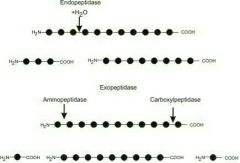
|
(○) 가수분해효소 (○) chymotrypsin의 기능 |
|
|
epimerase |

|
isomerase |
|
|
hydroxylase |

|
산화환원효소 |
|
|
decarboxylase |
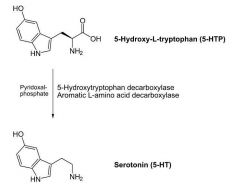
|
lyase(탈리효소) |
|
|
aminotransferase |

|
transferase |
|
|
acetyl CoA carboxylase |

|
ligase(합성효소) |
|
|
ATP |
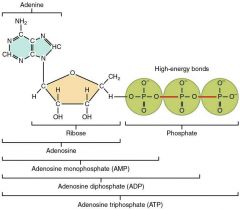
|
(○) adenine 함유 (○) 2 개의 pyrophosphate 결합 함유 (○) coenzyme (×) 전자수용체 (×) 인산 추가 결합 가능 |
|
|
NAD+ |
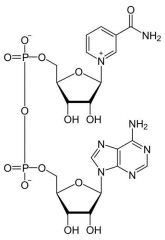
|
(○) adenine 함유 (○) coenzyme (○) 전자수용체 (○) 인산 추가 결합 가능 (×) 2 개의 pyrophosphate 결합 함유 (○) lactate dehydrogenase의 coenzyme (○) yeast alcohol dehydrogenase의 coenzyme (○) L-glutamate dehydrogenase의 coenzyme (×) glucose-6-phosphate dehydrogenase의 coenzyme (×) succinate dehydrogenase의 coenzyme |
|
|
NADP+ |
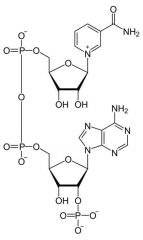
|
(○) L-glutamate dehydrogenase의 coenzyme (○) glucose-6-phosphate dehydrogenase의 coenzyme (×) lactate dehydrogenase의 coenzyme (×) yeast alcohol dehydrogenase의 coenzyme (×) succinate dehydrogenase의 coenzyme |
|
|
☆ 해당 과정 |
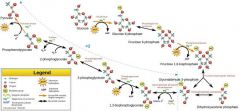
|
(○) 중간 생성물의 대부분은 인산 ester이며 세포에서 중간 생성물의 형태로 이탈하지 않는다. (×) glucose 1 분자의 분해는 2 분자 lactate 와 4 분자의 ATP를 형성한다. (×) ATP가 생성되면 중간 생성 단계는 없다. (×) pyruvate kinase는 phosphoenolpyruvate 형성에 필요하다. |
|
|
☆ glycolysis 고에너지 인산 화합물 |
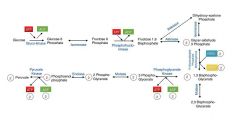
|
phosphoenol pyruvate(PEP) ∨ 1,3-bisphosphoglycerate(1,3-bPG) ∨ acetyl phosphate ≒ creatine phosphate ∨ ATP ∨ fructose-6-phosphate(Fru-6-P) ∨ glucose-6-phosphate(Glu-6-P) ∨ α-glycerophosphate(G3P) |
|
|
☆ hexokinase (irreversible) |
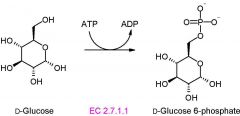
|
ATP + glucose 반응이 hexokinase 촉매되어 glucose 6-phosphate 생성됨 |
|
|
☆ phosphohexose isomerase |

|
|
|
|
☆ phosphofructokinase-1 (irreversible) |

|
|
|
|
☆ aldolase 기질 |

|
(○) fructose-1,6-diphosphate (×) galactose-6-phosphate (×) isocitric acid (×) glucose-1-phosphate (×) fructose-6-phosphate |
|
|
triose phosphate isomerase |
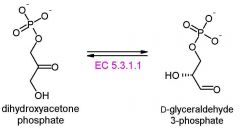
|
|
|
|
☆ glyceraldehyde-3-phosphate dehydrogenase |

|
(○) 헌팅턴 단백질은 glyceraldehyde 3-phosphate dehydrogenase에 결합하여 해당과정을 저해하고 ATP 결핍을 일으킨다. (○) NAD+ 필요 (×) NADP (×) FMN (×) ATP (×) Cu++ |
|
|
phosphoglycerate kinase |
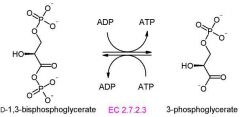
|
|
|
|
phosphoglycerate mutase |

|
|
|
|
☆ enolase |

|
(○) 해당과정에서 물 분자 하나를 잃으면서 분자간 에너지의 재분배를 통하여 에너지 상태를 높이는 효소 (○) 2-phosphoglyceric acid ↔ phosphoenol pyruvate + H2O |
|
|
☆ pyruvate kinase |

|
|
|
|
glucose부터 pyruvate까지 해당과정의 모든 중간대사체 중에서 인산 화합물 |
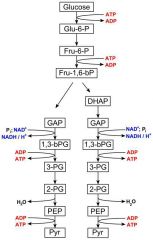
|
(○) 9 가지 (×) 7 가지 (×) 8 가지 (×) 10 가지 (×) 11 가지 |
|
|
☆ 해당과정에서 비가역 반응을 촉매하는 효소 |
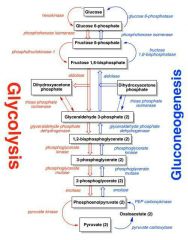
|
(○) hexokinase (○) phosphofructokinase-1 (△) pyruvate kinase (×) glyceraldehyde 3-phosphate dehydrogenase |
|
|
gluconeogenesis |
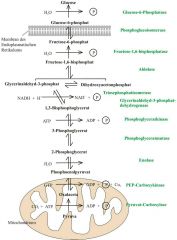
|
마지막 식사를 한지 48 시간이 지났을 때 혈중 글루코오스 농도를 유지하기 위해 작동하는 생체 대사 |
|
|
pyruvate carboxylase (irreversible) |

|
|
|
|
phosphoenolpyruvate carboxykinase (reversible) |
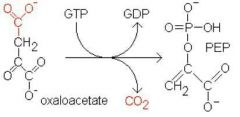
|
|
|
|
fructose-1,6-bisphosphatase (irreversible) |
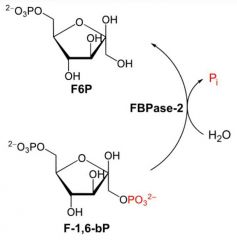
|
|
|
|
☆ LDH |
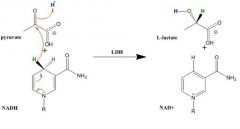
|
liver and heart muscle 장애로 증가하는 효소 |
|
|
pyruvate decarboxylase |

|
thiamine pyrophosphate 요구 효소 (○) alpha-ketoglutarate dehydrogenase complex (○) pyruvate dehydrogenase complex (○) transketolase (○) pyruvate decarboxylase (×) hexokinase (×) cytochrome a/a3 complex |
|
|
☆ pyruvate dehydrogenase (TPP 필요) |

|
(○) TPP가 관여해서 생성되는 화합물은 acetyl CoA (○) pyruvate dehydrogenase allosteric inhibitor는 ATP (○) pyruvate oxidative decarboxylation 필요 물질은 CoA (○) pyruvic acid가 TCA cylcle에 들어가기 전에 변환되는 것은 acetyl-CoA |
|
|
☆ citrate synthase (irreversible) |

|
(○) acetyl-CoA + oxaloacetate + H2O → CoA + citrate (○) acetyl Co A가 condensing enzyme 촉매로 citric acid 생성할 때 필요 물질은 oxaloacetate |
|
|
aconitase |
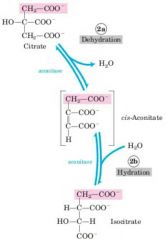
|
TCA cycle에서 citric acid가 isocitric acid로 될 때, 작용하는 효소 |
|
|
☆ isocitrate dehydrogenase (irreversible) |
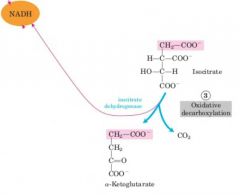
|
TCA cycle에서 isocitric acid가 α-ketoglutaric acid로 될 때, 작용하는 효소 |
|
|
☆ α-ketoglutarate dehydrogenase (irreversible) |
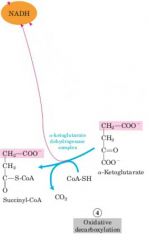
|
α-ketoglutarate + NAD+ + CoA → succinyl-CoA + CO2 + NADH |
|
|
succinyl-CoA synthetase (기질-수준 인산화) |
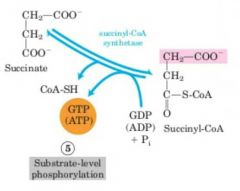
|
succinyl-CoA + Pi + GDP ↔ succinate + CoA + GTP |
|
|
☆ succinate dehydrogenase (Complex II) |
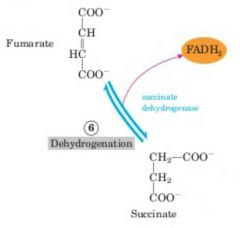
|
• malonate가 succinate dehydrogenase를 경쟁적 저해함 • Complex II는 proton gradient를 형성하는 데 관여하지 않음 |
|
|
fumarase |
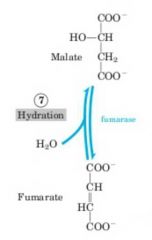
|
|
|
|
malate dehydrogenase |
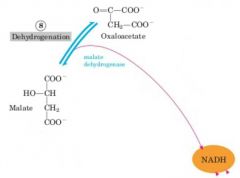
|
malate + NAD+ ↔ oxaloacetate + NADH |
|
|
구연산 회로(citric acid cycle)의 중간체 |
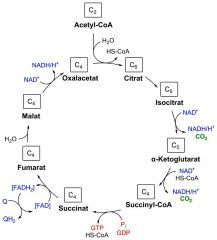
|
(○) succinate (○) oxaloacetate (○) fumarate (○) malate (×) acetoacetate |
|
|
☆ tricarboxylic acid cycle 반응 |
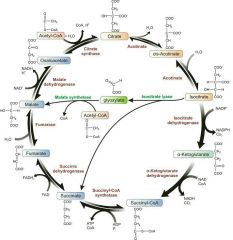
|
(○) cis-aconitate를 isocitrate로 수화 (○) isocitrate를 cis-aconitate로 탈수화 (○) α-ketoglutarate를 succinyl Co A로 산화적 탈카르복시화 (○) fumarate를 malate로 수화 (×) citrate를 oxalosuccinate로 탈카르복시화 (○) citrate synthase (○) aconitase (○) succinate dehydrogenase (○) fumarase (×) hexokinase (×) pyruvate dehydrogenase (×) cycloxygenase (×) aldolase (×) phosphofructokinase |
|
|
☆ 기질수준 인산화효소 |
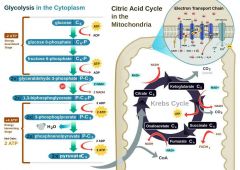
|
(○) succinyl Co A synthetase (○) phosphoglycerate kinase (×) α-ketoglutarate dehydrogenase (×) glyceraldehyde-3-phosphate dehydrogenase (×) 6-phosphogluconate dehydrogenase (×) citrate synthase (×) glycogen phosphorylase |
|
|
mitochondria shuttle |
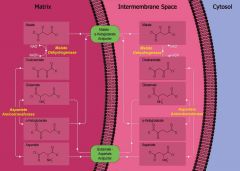
|
(○) pyruvate (○) dinitrophenol (○) malate (○) α-glycerophosphate (×) NADH (×) coenzyme A ester |
|
|
미토콘드리아 전자전달계 |
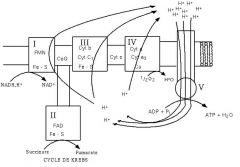
|
(○) 구성성분이 기능단위마다 4 개의 복합체를 형성한다. (○) 목적은 미토콘드리아 내막에 막전위를 형성하는 것이다. (○) cytochrome oxidase는 Cyt a, a3를 포함하는 전자전달체로 산소 수용체이다. (×) matrix와 내막에 있다. (×) ATP 합성효소는 F0F1-ATPase라고 하며 ATP 과잉이면 ATP를 분해한다. |
|
|
ubiquinone (CoQ) |
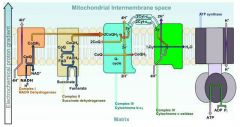
|
flavoprotein과 cytochrome b 사이에서 전자이동을 촉매하는 것 |
|
|
☆ complex II (succinate dehydrogenase) |
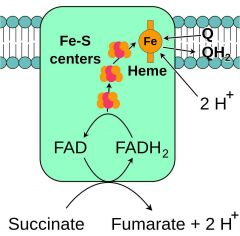
|
• malonate가 succinate dehydrogenase를 경쟁적 저해함 • complex II는 proton gradient를 형성하는 데 관여하지 않음 • succinate가 fumarate로 산화될 때 chemiosmotic model에서 생성되는 ATP 1.5 분자 |
|
|
☆ cytochrome oxidase (complex IV) |
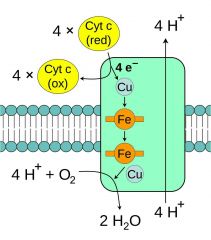
|
• 전자전달계에서 마지막 과정(1/2O2→H2O)에 관여하는 cytochrome • cyanide가 저해함 |
|
|
☆ 전자전달계와 기질수준 산화적 인산화의 분리 (uncoupling) |
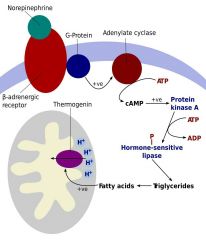
|
• arsenite가 해당 경로에 독성을 나타내는 기전 • dinitrophenol(DNP) 독성 |
|
|
☆ 전자에 대한 친화도가 가장 낮은 것 |
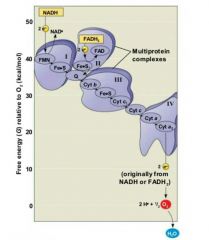
NADP+ ∧ NAD+ ∧ FAD ∧ FMN ∧ ubiquinone ∧ O2 |
|
|
|
☆ 전자전달계 inhibitor 설명 |
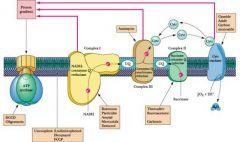
|
(○) venturucidin - 전자전달 저해 (○) dinitrophenol - uncoupling (○) CO - 전자전달 저해 (○) DCCD(dicyclohexylcarbodiimine) - ATP synthase 저해 (○) CN, CO, H2S - Cyt oxidase 저해 (○) Ventruricidin, Oligomycin, DCCD - ATP Synthase(F0) 저해 (○) DNP, CCCP, Valinomycin - Uncoupler (×) oligomycin - 전자전달 저해 |
|
|
uridylyltransferase |

|
갈락토오스 혈증이란 효소의 장애로 갈락토오스와 갈락토오스 1-인산이 체내에 축적되는 상염색체 열성 유전으로 갈락토오스 혈증 I형이라 하는데 이 경우 결핍된 효소 |
|
|
☆ pentose phosphate pathway 중요성 |
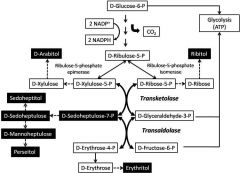
|
(○) ribose를 공급하여 핵산 합성, 오탄당 대사에 관여한다. (○) NADPH를 공급한다. (○) GS-SG로부터 GSH로 환원시키는데 중요하다. (○) 적혈구에서 왕성하게 수행되어 oxidative damage로부터 세포를 보호한다. (○) 해당과정, citric acid cycle을 통한 glucose의 산화보다 ATP 생성률이 크다. (×) NAD+를 공급하여 혐기 조건에서 glycolysis가 계속 진행되게 한다. (×) citric acid cycle과 밀접하게 관련있다. (×) ribose, 4-carbon, 7-carbon 당을 생성한다. (×) glucose, gluconate, glucuronate 등에서 에너지를 생성할 때 다양한 효소를 사용한다. |
|
|
☆ tryptophan으로부터 생성되는 물질 |
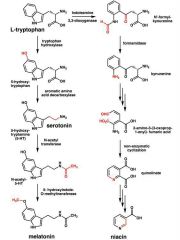
|
(○) melatonin (○) serotonin (×) dopamine (×) epinephrine (×) thyroxine (×) fumarate |
|
|
urea cycle |
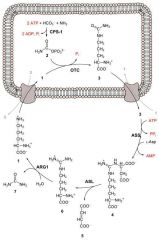
|
(○) ammonia는 urea 형태로 배출된다. (○) arginine은 urea 전구체이다. (○) ornithine은 carbamoyl phosphate와 반응하여 citrulline이 된다. (○) 생성되는 fumarate는 urea cycle과 citric acid cycle을 연결한다. (×) 척추동물과 조류에서는 urea 대신에 uric acid가 배출된다. |
|
|
☆ 도파민 생합성 전구체 |
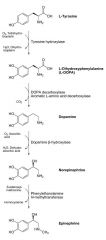
|
(○) tyrosine (×) glycine (×) proline (×) asparagine (×) lycine |
|
|
adenosine deaminase (ADA) deficiency |

|
(○) 심한 면역 결핍 증세를 일으킨다. (○) adenosine deaminase 결핍이 원인이다. (○) purine 대사 이상이 원인이다. (○) 유전자 치료를 시도할 수 있다. (×) 필수 아미노산 결핍이 원인이다. |
|
|
arachidonic acid |
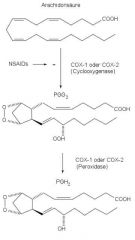
|
인체에서 prostaglandin의 precursor |
|
|
☆ 페닐케톤뇨증, 백색증 관련 아미노산 대사 |

|
(○) tyrosine (×) tryptophan (×) histidine (×) arginine (×) methionine |
|
|
adenylyl cyclase |

|
ATP → cAMP + ppi |
|
|
adenylate kinase |
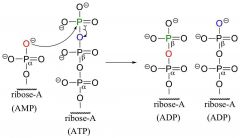
|
ATP + AMP ↔ 2ADP |
|
|
pyrimidine dNTP 과잉일 때, ribonucleotide reductase에 대한 되먹임 조절 신호가 되는 nucleotide |

|
(○) dTTP (×) dCTP (×) dGTP (×) dUTP (×) dATP |
|
|
5-fluorouracil: thymidylate synthase inhibitor |
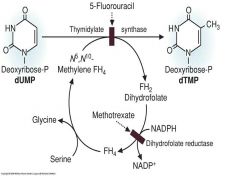
|
nucleotide 합성을 방해하여 암세포 성장을 억제하는 것 |
|
|
☆ phosphocreatine |

|
(○) 근육에 있는 고에너지 인산 화합물(×) ATP와 동일하게 자주 사용되는 화합물(×) 뇌세포가 많이 사용하는 에너지 화합물(×) 간세포가 많이 사용하는 에너지 화합물 |
|
|
☆ pyruvate에서 직접 생성되는 물질 |
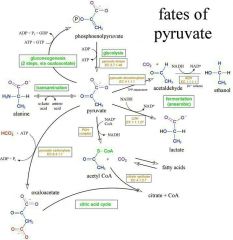
|
(○) oxaloacetate (○) lactate (○) alanine (○) acetyl Co A (○) malate (△) valine (△) ethanol (×) kinate (×) citrate |
|
|
alanine aminotransferase에 관여하는 pyridoxal phosphate |

|
(○) pyridoxal phosphate (×) biotin (×) ascorbic acid (×) NAD (×) zinc ion |
|
|
포도당 - aldohexose |
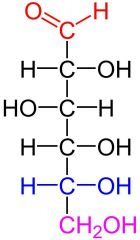
|
(○) aldohexose (×) ketohexose (×) aldopentose (×) ketopentose (×) oligosaccharide |
|
|
☆ glyceraldehyde D-체, L-체 |

|
당의 D-체, L-체 결정하는 표준화합물 |
|
|
☆ glucose 중합체 |

|
(○) amylose (○) starch (○) glycogen (○) amylopectin (○) cellulose (×) inulin |
|
|
☆ invertase |

|
(○) glucose + fructose (×) glucose + glucose (×) fructose + fructose (×) glucose + galactose (×) glucose + maltose (×) glucose + mannose (×) fructose + mannose |
|
|
☆ HMP shunt 요소 |
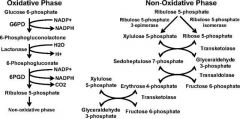
|
(○) NADPH (○) glucose-6-phosphate dehydrogenase (○) ribose-5-phosphate + xylulose ↔ sedoheptulose-7-phosphate + glyceraldehyde-3-phosphate (×) glucose-6-phosphatase (×) phosphorylase (×) aldolase (×) fructose-6-phosphatase (×) NADH (×) ATP (×) CoA (×) fructose
|
|
|
☆ glucose에서 glucuronic acid가 생성되는 과정에서 중간체 |

|
(○) UDP-glucose (○) UDP-glucuronic acid (○) glucose-6-phosphate (○) NAD+ (×) ATP (×) FMN (×) NADP (×) NADPH (×) L-gluconic acid |
|
|
N-acetylneuramic acid |
N-acetylmannosamine-6-phosphate + phosphoenolpyruvic acid |
(○) phosphoenolpyruvic acid (×) glucuronic acid (×) N-acetylgalactosamine (×) uridine triphosphate (×) succinyl Co A |
|
|
과당 - ketohexose |
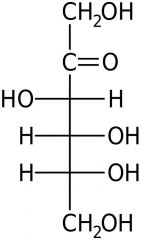
|
(○) ketohexose (×) aldohexose (×) ketopentose (×) aldopentose (×) oligosaccharide |
|
|
☆ 전분과 I2 용액 정색반응 원인 |
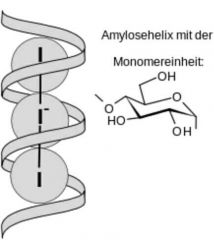
|
(○) helical coil 구조의 amylose (×) amylopectine (×) fructose (×) maltose (×) glucose 유리 환원기 (×) pentose |
|
|
☆ pentose uria에서 고농도로 배설되는 것 |

|
(○) L-xylulose (×) gluconate (×) ribose (×) ribose 1-phosphate (×) fructose (×) arabinose (×) glucose |
|
|
☆ 탄수화물 환원성이 기인하는 radical |

|
(○) hemiacetal hydroxyl (×) hemiacetal carboxyl (×) free hydroxyl (×) free carboxyl (×) cupric ions (×) Na |
|
|
☆ glucose를 sodium amalgam (Na-Hg) 같은 환원제로 환원시키면 생성되는 것 |

|
(○) sorbitol (×) sorbosol (×) mannitol (×) mannose (×) dulcitol (×) gluconic acid |
|
|
'glucose, mannose는 epimer' 의미 |
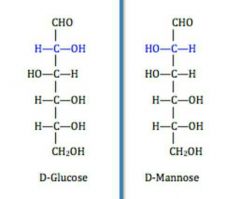
|
(○) 탄소 원자 한 개의 configuration만 다름 (×) 하나는 pyranose, 다른 하나는 furanose (×) 하나는 aldose, 다른 하나는 ketose (×) 서로 conformation change 가능함 (×) 서로 대칭 |
|
|
☆ glycogen phosphorylase |

|
glycogen + Pi → glucose-1-phosphate 반응 효소 |
|
|
☆ 혐기성 해당 작용 (anaerobic glycolysis) |
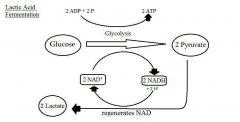
|
(○) 1 분자의 glucose는 2 분자의 lactic acid를 생성하며 2 분자의 ATP가 생성된다. (○) glucose → glucose-6-phosphate 반응을 hexokinase가 촉매한다. (○) substrate-level phosphorylation만 수행되며 respiration-linked phosphorylation은 수행되지 않는다. (○) 생성된 NADH는 에너지 생산에 사용되지 못한다. (○) EM pathway (×) 최종 생성물은 lactic acid이며 시간이 지나면 대부분 소변으로 배설된다. (×) 1 분자의 glucose가 직접 2 분자의 lactic acid로 된다. (×) aldolase는 hexose phosphate 이성화반응을 촉매한다. (△) pyruvic acid가 acetyl Co A로 되어 TCA로 도입된다. (△) enolase는 Mg++ 하에 2-phosphoglycerate에 작용한다. |
|
|
Krebs cycle 진행을 저지하는 물질 |
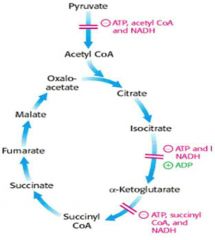
|
(○) fluoroacetic acid (○) arsenite (○) malonate (○) ATP (×) zinc |
|
|
☆ 불활성 phosphorylase가 활성화되는 요인 |
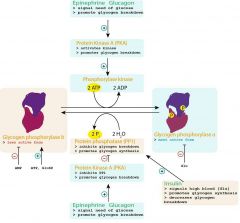
|
(○) cyclic AMP (×) cyclic dextrine (×) cyclooxygenase (×) cyclohexane (×) cytochrome |
|
|
☆ pyruvic acid가 탈탄산 되면서 active acetate로 되는 반응의 활성화 인자 |

|
(○) TPP (○) dehydro-lipoic acid (○) Co A (○) glucose-6-phosphate (×) biotin-enzyme |
|
|
pyruvic acid가 acetyl coenzyme A로 될 때 필요한 것 |
(○) lipoic acid (×) folic acid (×) galic acid (×) tocopherol (×) coenzyme A |
|
|
|
uridylyltransferase |

|
갈락토오스 혈증이란 효소의 장애로 갈락토오스와 갈락토오스 1-인산이 체내에 축적되는 상염색체 열성 유전으로 갈락토오스 혈증 I형이라 하는데 이 경우 결핍된 효소 |
|
|
maltose |
4-O-α-D-glucopyranosyl-D-glucopyranose |
|
|
|
L-fucose |
6-deoxy-L-galactose |
|
|
|
L-rhamnose |
6-deoxy-L-mannose |
|
|
|
lactose |
4-O-β-D-galactopyranosyl-D-glucopyranose |
|
|
|
sucrose |
α-D-glucopyranosyl-(1→2)-β-D-fructofuranoside |
|
|
|
furfural |
강황산에 의한 pentose의 탈수산물 |
|
|
|
δ-gluconolactone |
glucose가 dehydrogenase로 산화될 때 생성물 |
|
|
|
sorbitol |
금속 촉매의 존재와 가압하에서 H2 gas로 glucose를 환원시킬 때 산물 |
|
|
|
fructose, mannose |
저온에서 약 alkali 용액으로 glucose를 반응시킬 때 생성물 |
|
|
|
sodium gluconate |
알칼리요오드화물로 glucose를 반응시킬 때 생성물 |
|
|
|
혈장 당단백질에 직접적으로 부착되는 탄수화물 |
dolichol diphosphoryl digosaccharide |
|
|
|
혈장 당단백질의 최말단 탄수화물 잔기 |
cytidine diphosphoryl sialic acid |
|
|
|
deoxysugar 중 세포벽을 구성하는 당 |
L-fucose |
|
|
|
glucose가 strong acid에 의해 형성하는 것 |
saccharic acid |
|
|
|
hemi-cellulose 단위체 |
xylose |
|
|
|
fructan |
inulin |
|
|
|
non-toxic, biodegradable, β(1→4)-linked-D-glucosamine homopolymer |
chitin |
|
|
|
혈액응고 예방, 억제하는 muco-polysaccharide |
heparin |
|
|
|
hyaluronic acid, heparin에 존재하는 것 |
glucosamine |
|
|
|
hypertensinogen 활성화 인자 |
renin |
|
|
|
glucose의 C1과 Asn 잔기 간의 공유결합 |
N-glycosidic linkage |
|
|
|
cellulose |
식물의 세포벽을 구성하는 주요 다당류로 10000-15000 개 정도의 D-glucose로 구성되며, glucose 연결은 amylose와 달리 β configuration을 나타낸다. 대부분 동물은 분해효소의 결핍으로 이 성분을 분해하여 에너지원으로 사용할 수 없다. |
|
|
|
sucrose |
glucose, fructose로 이루어진 이당류로 식물에서 형성된다. 가장 많이 존재하는 이당류로 구조상의 anomeric carbon이 glycosidic bond 형성에 관여하고 있으므로 비환원당으로 분류된다. |
|
|
|
tyrosine → melanin 반응 효소 |
tyrosinase |
|
|
|
casein → paracasein 변환효소 |
rennin |
|
|
|
enterokinase에서 활성화된 효소 |
trypsin |
|
|
|
L-tryptophan |
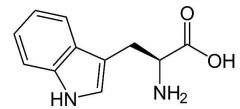
|
nicotinic acid 전구체 |
|
|
tryptamine |
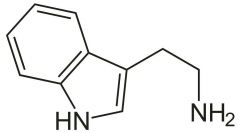
|
|
|
|
L-5-hydroxytryptophan |
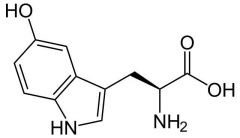
|
|
|
|
serotonin |
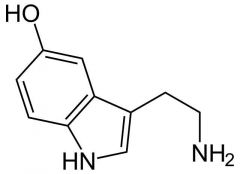
|
|
|
|
melatonin |
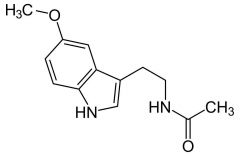
|
|
|
|
indolepyruvic acid |
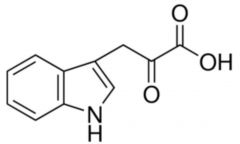
|
|
|
|
indoleacetic acid |
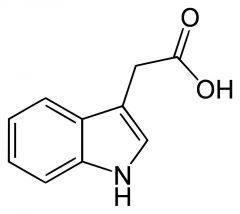
|
|
|
|
phenylethylamine |
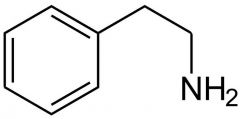
|
|
|
|
L-phenylalanine |
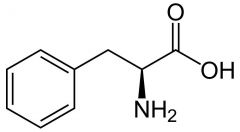
|
|
|
|
tyramine |

|
|
|
|
L-tyrosine |
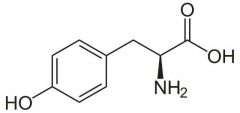
|
homogentisic acid 전구체 |
|
|
levodopa |
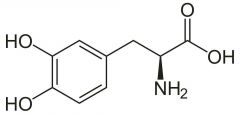
|
|
|
|
dopamine |
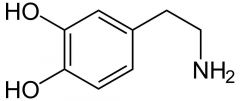
|
|
|
|
histamine |
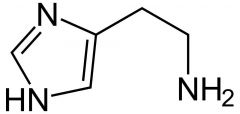
|
|
|
|
L-histidine |
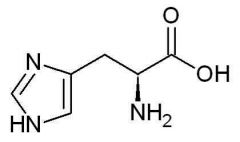
|
histamine 전구체 |
|
|
γ-aminobutyric acid (GABA) |
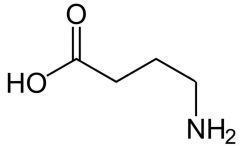
|
|
|
|
L-glutamic acid |
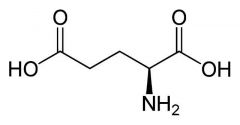
|
|
|
|
소변 NH3의 전구체로서 glutaminase에 의해 NH3를 생성 |
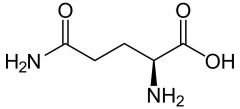
|
L-glutamine |
|
|
α-ketoglutaric acid |
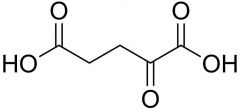
|
|
|
|
β-alanine |
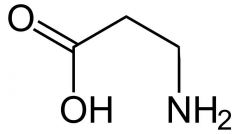
|
|
|
|
L-aspartic acid |
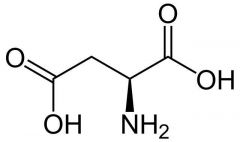
|
|
|
|
L-asparagine |
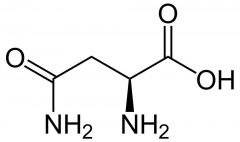
|
|
|
|
oxaloacetic acid |
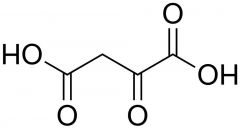
|
|
|
|
cadaverine |

|
|
|
|
ε-amino group이 있는 필수아미노산 |

|
L-lysine decarboxylation 생성물은 cadaverine |
|
|
putrescine |

|
|
|
|
요소 합성 회로에서 arginine으로부터 합성되는 물질 |

|
L-ornithine은 citrulline 전구체 |
|
|
L-citrulline |

|
|
|
|
arginase에 의해 urea를 생성하는 물질 |

|
L-arginine |
|
|
agmatine |

|
|
|
|
glycine |
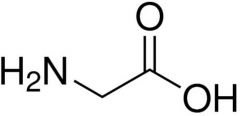
|
|
|
|
glycocyamine (guanidinoacetic acid) |
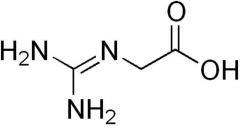
|
|
|
|
glycocyamine (guanidinoacetic acid) 로부터 생합성되는 물질 |
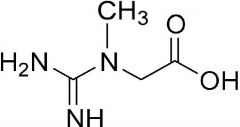
|
creatine |
|
|
lipotropic factor |
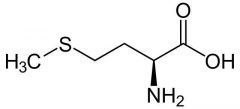
|
L-methionine |
|
|
product of methionine demethylation |
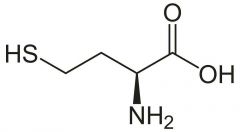
|
L-homosysteine |
|
|
L-serine |
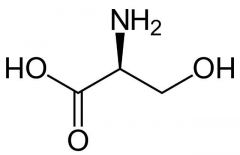
|
|
|
|
L-cystathionine |

|
|
|
|
glutathione 구성 물질 |
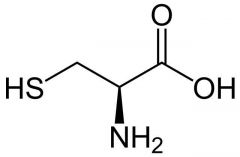
|
L-systeine |
|
|
L-cysteine sulfinic acid |

|
|
|
|
product of systeine oxidation |
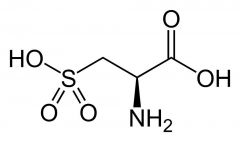
|
L-systeic acid |
|
|
product of cysteic acid decarboxylation |

|
taurine |
|
|
p-hydroxyphenylpyruvic acid |
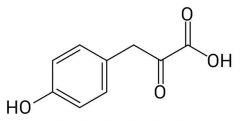
|
|
|
|
homogentisic acid |
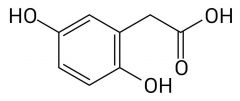
|
|
|
|
N'-formylkynurenine |

|
|
|
|
niacin (nicotinic acid) |
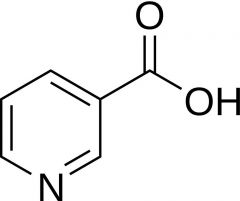
|
|
|
|
eumelanin |
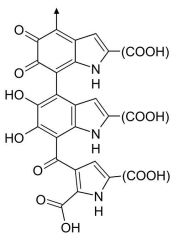
|
|
|
|
L-alanine |

|
|
|
|
pyruvic acid |
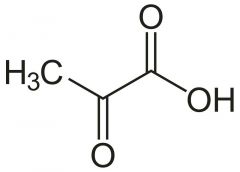
|
|
|
|
L-valine |
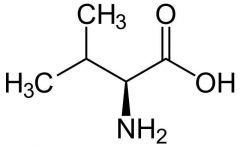
|
|
|
|
L-leucine |
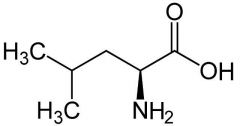
|
|
|
|
L-isoleucine |
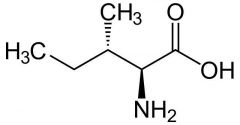
|
|
|
|
L-threonine |
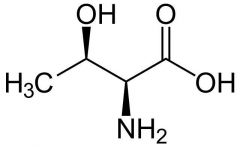
|
|
|
|
carbamoylphosphate |

|
|
|
|
urea |
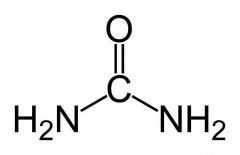
|
|
|
|
uric acid |
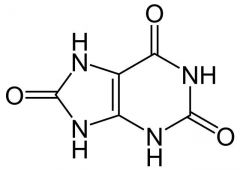
|
|
|
|
hippuric acid |

|
|
|
|
carnosine |
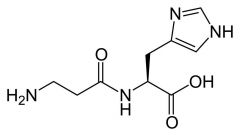
|
|
|
|
anserine |
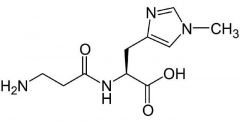
|
|
|
|
L-proline |
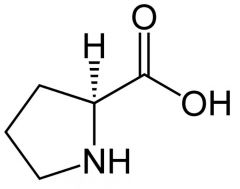
|
|
|
|
L-hydroxyproline |
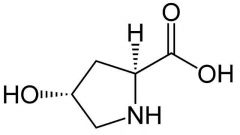
|
|
|
|
betaine |
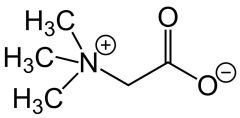
|
|
|
|
choline |
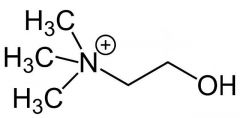
|
|
|
|
acetylcholine |

|
|
|
|
γ-carboxyglutamic acid |

|
|
|
|
glutathione |

|
|
|
|
cystine |

|
|
|
|
mevalonic acid |

|
|
|
|
succinyl-CoA (C4) |
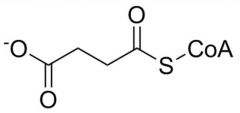
|
|
|
|
malonyl-CoA (C3) |

|
|
|
|
acetoacetic acid (C4) |
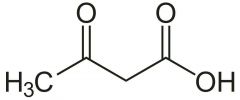
|
|
|
|
cephalin (phosphatidylethanolamine) |
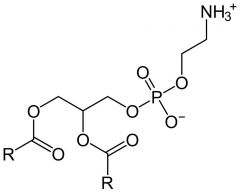
|
|
|
|
cerebroside (monoglycosylceramide) |
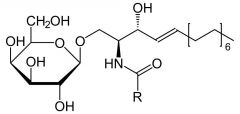
|
|
|
|
sphingomyelin (choline or ethanolamine) |

|
|
|
|
lecithin |

|
|
|
|
cardiolipin |

|
|
|
|
plasmalogen |
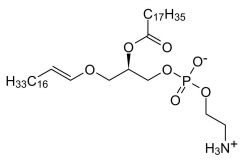
|
|
|
|
sphingosine |

|
|
|
|
palmitoyl-CoA (C16-CoA) |

|
|
|
|
L-serine |
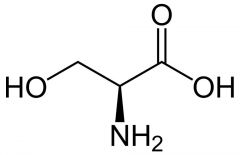
|
|
|
|
ceramide |
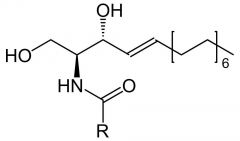
|
|
|
|
ganglioside |
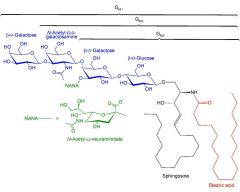
|
|
|
|
cholesterol |
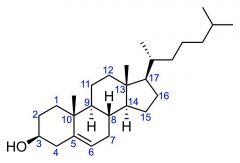
|
|
|
|
cholic acid |
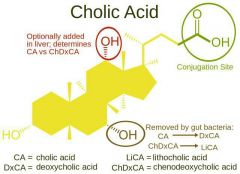
|
|
|
|
cholestanol |

|
|
|
|
deoxycholic acid, chenodeoxylcholic acid |
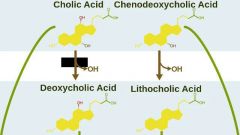
|
|
|
|
testosterone 》estradiol |

|
|
|
|
steroid 5번 탄소 |

|
|
|
|
arachidonate 》 prostaglandin |
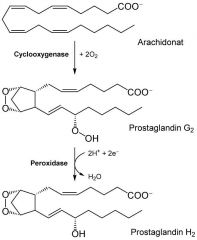
|
|
|
|
phosphatidylinositol |
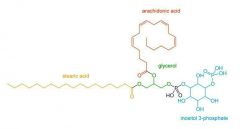
|
|
|
|
cholesterol》androgen |

|
|
|
|
cholesterol》progesterone |

|
|
|
|
ketone body |
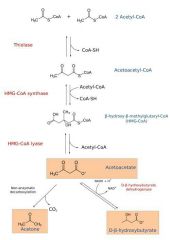
|
|
|
|
carnitine carrier |
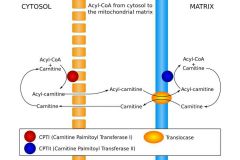
|
|
|
|
☆ beta oxidation |
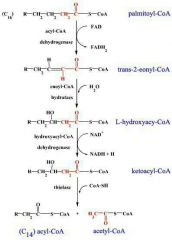
|
(○) acyl-CoA가 FAD 관여 효소로 탈수소되어 α, β 불포화 acyl-CoA가 된다. (○) 불포화 acyl-CoA는 hydratase로 β-hydroxy acyl-CoA가 된다. (○) β-hydroxy acyl-CoA는 NAD가 관여하는 탈수소 반응으로 β-keto acyl-CoA가 된다. (○) β-keto acyl-CoA가 분해되어 초산과 지방산으로 된다. |
|
|
thiokinase |
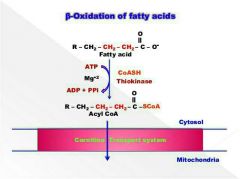
|
CoA와 ATP에 의하여 지방산을 CoA 유도체로 만드는 반응을 촉매한다. |
|
|
ketogenesis |
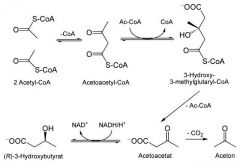
|
|
|
|
fatty acid synthesis |
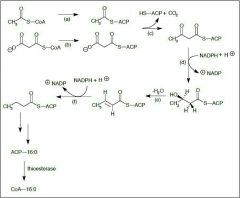
|
|
|
|
mevalonate pathway |

|
|
|
|
☆ lipidprotein lipase |

|
혈장 지방 단백질에 존재하는 triglyceride를 가수분해하는 효소 |
|
|
☆ sphingolipidose |
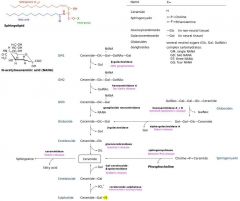
|
(○) Tay-Sachs disease: hexoaminidase A 결핍 (○) Niemann-Pick disease: sphingomyelinase 결핍 (○) hemolytic anemia: glucose-6-phosphate dehydrogenase 결핍 (○) Lesch-Nyhan syndrome: HGPRT 기능 저하 (×) multiple sclerosis: cholesterol 축적 |
|
|
unsaturated fatty acid beta oxidation |
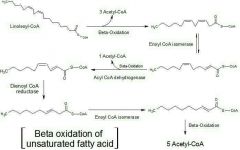
|
|
|
|
racemase (3-hydroxybutyryl-CoA epimerase) |
(S)-3-hydroxybutanoyl-CoA ↔ (R)-3-hydroxybutanoyl-CoA |
불포화 지방산 산화와 관련하여 D-β-HO-acyl CoA를 L-β-HO-acyl CoA로 전환시키는 효소 |
|
|
☆ oleic acid 18:1 cis-9 |
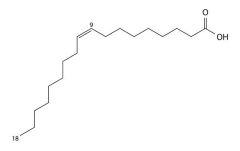
|
(○) 포화지방산인 stearic acid에 불포화반응시켜 생성한다. |
|
|
☆ stearic acid 18:0 |

|
|
|
|
☆ linoleic acid 18:2 cis,cis-9,12 |

|
|
|
|
☆ α-linolenic acid 18:3(ω-3) all-cis-9,12,15 |
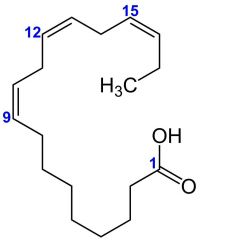
|
|
|
|
☆ arachidonic acid 20:4(ω-6) all-cis-5,8,11,14 |

|
|
|
|
lipid peroxidation |
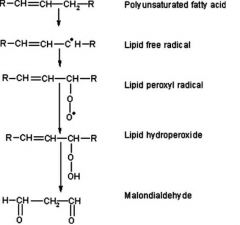
|
(○) malondialdehyde (×) thiobarbituric acid (×) linoleic acid (×) arachidonic acid (×) glutamine |
|
|
palmitic acid 16:0 |
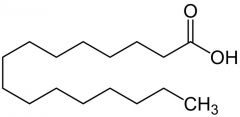
|
|
|
|
myristic acid 14:0 |

|
|
|
|
lauric acid 12:0 |

|
|
|
|
☆ RNA hydrolysis |

|
(○) D-ribose (○) uracil (○) adenine (○) guanine (○) cytosine (○) phosphoric acid (○) purine (×) adenosine |
|
|
☆ RNA base, DNA base |
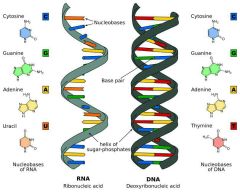
|
(○) uracil은 RNA에 함유되어 있으나 DNA에는 함유되지 않음 (○) thymine은 DNA에 함유되어 있으나 RNA에는 함유되지 않음 |
|
|
RNA alkaline(pH 9) hydrolysis |
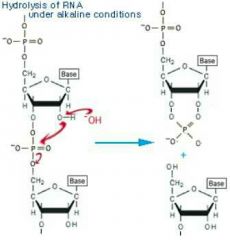
|
(○) nucleoside-2',3'-cyclic monophosphate (×) nucleoside-3',5'-diphosphate (×) nucleoside-5'-phosphate (×) adenosine diphosphate (×) ribose-3-phosphate |
|
|
pyrimidine antimetabolite |
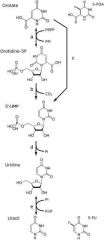
|
(○) 5-fluoroorotate (×) thiouracil (×) allantoin (×) uric acid (×) allopurinol |
|
|
☆ purine 질소 원자 유래 |
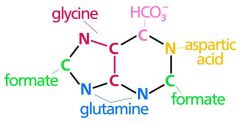
|
(○) aspartate 1번 (아스팔트산) (○) folic acid 2번 (옆산) (○) glutamine 3번 (길루타민) (○) glycine 4, 5번 (길리신) (○) HCO3- 6번 (중탄산) (○) glycine 7번 (길리신) (○) folic acid 8번 (옆산) (○) glutamine 9번 (길루타민) (×) ammonia 3, 9번 (×) urea 7, 8, 9번 |
|
|
☆ dUMP(1a) ⇔ dTMP(1b) 촉매하는 thymidylate synthase(A) cofactor(2) |
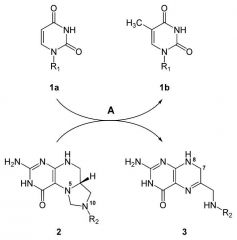
|
(○) tetrahydrofolic acid (×) ATP (×) FMN (×) 4-phosphopantothenate (×) biotin |
|
|
☆ 5-phosphoribosyl-1-pyrophosphate 관여 생합성 |
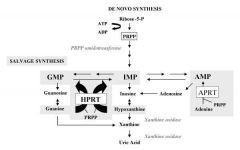
|
(○) FAD (○) NAD (○) purine nucleotide (○) pyrimidine nucleotide |
|
|
inosinic acid 관계 물질 |
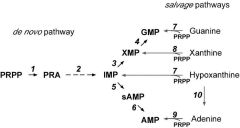
|
(○) adenylic acid (○) guanylic acid (○) purine (×) pyrimidine (×) orotic acid (×) uridylic acid (×) cytidylic acid |

